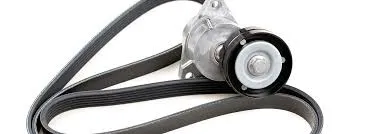- Arabic
- French
- Russian
- Spanish
- Portuguese
- Turkish
- Armenian
- English
- Albanian
- Amharic
- Azerbaijani
- Basque
- Belarusian
- Bengali
- Bosnian
- Bulgarian
- Catalan
- Cebuano
- Corsican
- Croatian
- Czech
- Danish
- Dutch
- Afrikaans
- Esperanto
- Estonian
- Finnish
- Frisian
- Galician
- Georgian
- German
- Greek
- Gujarati
- Haitian Creole
- hausa
- hawaiian
- Hebrew
- Hindi
- Miao
- Hungarian
- Icelandic
- igbo
- Indonesian
- irish
- Italian
- Japanese
- Javanese
- Kannada
- kazakh
- Khmer
- Rwandese
- Korean
- Kurdish
- Kyrgyz
- Lao
- Latin
- Latvian
- Lithuanian
- Luxembourgish
- Macedonian
- Malgashi
- Malay
- Malayalam
- Maltese
- Maori
- Marathi
- Mongolian
- Myanmar
- Nepali
- Norwegian
- Norwegian
- Occitan
- Pashto
- Persian
- Polish
- Punjabi
- Romanian
- Samoan
- Scottish Gaelic
- Serbian
- Sesotho
- Shona
- Sindhi
- Sinhala
- Slovak
- Slovenian
- Somali
- Sundanese
- Swahili
- Swedish
- Tagalog
- Tajik
- Tamil
- Tatar
- Telugu
- Thai
- Turkmen
- Ukrainian
- Urdu
- Uighur
- Uzbek
- Vietnamese
- Welsh
- Bantu
- Yiddish
- Yoruba
- Zulu
Aug . 11, 2024 02:34 Back to list
Understanding the Importance and Functionality of Lathe Drive Belts in Metalworking Machines
Understanding Lathe Drive Belts Importance and Maintenance
Lathe machines are indispensable tools in the machining and manufacturing industries, allowing for the precise shaping of materials, especially metals and plastics. One of the most critical components of a lathe machine is its drive belt. The drive belt plays a pivotal role in transferring power from the motor to the spindle, converting rotational energy into motion that shapes the workpiece. This article aims to explore the significance of lathe drive belts, their types, and how to maintain them for optimal performance.
Importance of Lathe Drive Belts
Drive belts are essential for the smooth functioning of lathe machines. They are responsible for maintaining the necessary speed and torque required for different machining tasks. A well-functioning drive belt ensures that the lathe operates efficiently, producing accurate and high-quality workpieces. When the belt is in good condition, it minimizes vibration and noise, contributing to a safer and more pleasant working environment.
Furthermore, the drive belt contributes to the versatility of a lathe machine. By allowing for adjustable speeds and torque, it enables machinists to tailor the operation of the lathe according to the specific requirements of the job. Different materials and cutting operations may necessitate different speeds, which can often be achieved simply by changing the tension or configuration of the drive belt.
Types of Lathe Drive Belts
Lathe drive belts come in various types, each designed for specific applications and machinery. Common materials used for these belts include rubber, polyurethane, and leather.
1. V-Belts These are among the most commonly used drive belts on lathes. Their trapezoidal shape allows for better grip and efficient power transmission. V-belts are known for their durability and can handle a significant amount of load, making them ideal for heavy-duty lathes.
2. Flat Belts Traditionally, many older lathe models used flat belts. Although less common today, flat belts are still found in some vintage machines. They operate on friction and are generally used for lighter applications. Flat belts offer ease of replacement and maintenance.
lathe drive belts

3. Timing Belts These belts have teeth that fit into grooves on the pulley, allowing for precise movement without slippage. Timing belts are often used in lathes where precision is critical, as they maintain a fixed relation between the motor and the spindle speed.
Maintenance of Lathe Drive Belts
Maintaining drive belts is essential for ensuring the longevity and efficiency of a lathe machine. Here are some key maintenance tips
1. Regular Inspection Periodically check the belts for signs of wear and tear, such as cracks, fraying, or glazing. Identifying these issues early can prevent further damage and costly repairs.
2. Proper Tensioning Ensuring that the belt is correctly tensioned is vital. A belt that is too loose can slip, leading to inconsistent speeds, while a belt that is too tight can cause excessive wear on the motor and pulleys.
3. Cleaning Keep the belts free from dust, oil, and other contaminants. Clean the pulleys as well, as contaminants can affect the grip and efficiency of power transmission.
4. Replacement Schedule timely replacements of drive belts. Most belts have a specific lifespan, and replacing them before they fail can save time and increase productivity.
In conclusion, drive belts are a fundamental component of lathe machines, crucial for their operation and performance. Understanding their importance, types, and maintenance can help machinists maximize productivity and safeguard their equipment. By paying attention to these aspects, users can ensure that their lathe machines operate efficiently, thereby producing high-quality work with minimal downtime.
-
Upgrade Power Steering Pump Belt for Smooth, Quiet Operation
NewsAug.27,2025
-
Precision Timing Belt & Chain: Engine Performance & Durability
NewsAug.26,2025
-
Precision Lathe Drive Belts: Durable & Reliable Performance
NewsAug.25,2025
-
84.5 Serpentine Belt: Durable & Precision Fit for Your Engine
NewsAug.24,2025
-
Premium Ribbed Drive Belts for Quiet Power Transmission
NewsAug.23,2025
-
High-Performance Vehicle Timing Belt for Engine Precision
NewsAug.22,2025

